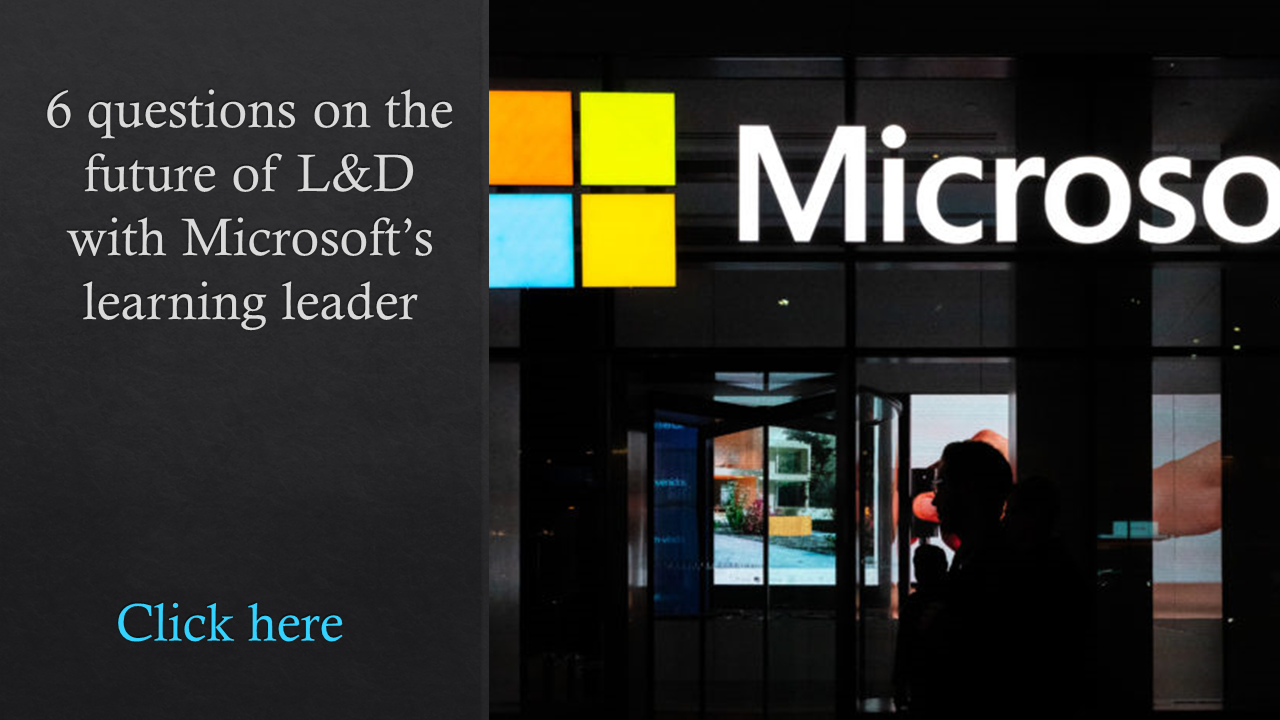With more than 175,000 employees across 74 countries, Microsoft was faced with an enormous people challenge when the pandemic set in early last year and the world of work largely moved to a remote setting. From creating connection in virtual environments to scrambling to keep up with quickly changing employee needs, Microsoft’s HR professionals have been working since to manage what’s likely going to be the “biggest change” in most employees’ careers, said Amy Coleman, corporate vice president, HR and corporate functions, at Microsoft.
While the pace of that change has challenged HR like never before, it’s also already wrought a number of lessons. In fact, when preparing for her presentation at the Institute for Corporate Productivity’s Next Practices Now Conference–being staged virtually through Nov. 3, with an in-person component this spring–Coleman came up with 25 learnings that Microsoft already has gleaned from the shift to remote and hybrid work.
New: The FDA just authorized booster shots. What should employers do?
Ultimately, she narrowed the list down to 10:
1. A strong culture counteracts chaos: Microsoft has been on a journey to transform its culture over the last six-plus years–and that work proved vital during the pandemic. “Culture is put to the test in a crisis,” she said. “Ours helped anchor us.” Three aspects of Microsoft’s culture became the “guiding star” during the last year-and-a-half: It operates as “one Microsoft team,” prioritizes diversity and inclusion and is customer-obsessed. On the latter front, for example, when retail stores had to shut down early in the pandemic, Microsoft created an emergency remote model that enabled 80% of retail employees to provide virtual training for customers–meeting the needs of customers while also keeping employees on the payroll.
2. Employee wellbeing has taken on a new meaning: HR leaders have always understood the value of tending to employee wellbeing but long struggled to get traction on the issue–then came the pandemic, when business leaders could no longer deny the value of prioritizing wellbeing. While many employers saw productivity increase, workers were taking fewer vacation days, working after normal hours and suffering burnout and stress. To tackle the issue, Microsoft started by modifying its messaging, renaming its “sick days” as “sick and mental health time.” Leaders also gained a new appreciation for the many dimensions of wellbeing–emotional, physical, financial, psychological. They offered discussion guides to teach managers how to talk to their reports about these varied areas and expanded benefits, including creating new pandemic leave for parents.

3. Managers matter–a lot. Microsoft employs about 22,000 managers, who became even more critical during the pandemic. In particular, the organization leaned on its managers to help acclimate the 25,000 new hires it brought on since the pandemic started, finding that new hires relied on managers for onboarding assistance 20% more during this time. And, those with managers who were actively involved in the process were three times more likely to be satisfied with their onboarding. “When managers can create a supportive work environment where people love to work and [have] a sense of work/life balance, the natural byproduct is that people feel more connected,” Coleman said.
See also: 6 HR lessons from Microsoft’s CHRO
4. Use two ears and one mouth: COVID-19 has highlighted the importance of leaders listening “carefully, with intensity, responsibility and accountability,” Coleman said. At Microsoft, leaders noticed that the time employees were spending in meetings more than doubled once the pandemic started, and the number of chats being sent after typical office hours skyrocketed. Sensing an issue, leaders turned to tech to gauge employee sentiment on work/life balance and other topics–offering all employees a chance to provide feedback during company townhalls and creating a company channel dedicated to answering employees’ pandemic-related questions. Importantly, she said, leaders also shared data and insights on employee needs with managers.
 5. Flexibility has many dimensions: Before COVID-19, Microsoft allowed occasional flex hours and work-from-home days, but flexibility wasn’t part of its core culture–yet. “The pandemic turned that on its ear,” Coleman said. Now, leaders understand that flexibility needs to be highly personalized, based on each employee’s needs–meaning managers and leaders need to deeply understand what dimensions of flexibility are important to their employees. “Flexibility is multi-faceted, personal and will continue to evolve–and now is an incredibly opportunity to continue the momentum,” she said.
5. Flexibility has many dimensions: Before COVID-19, Microsoft allowed occasional flex hours and work-from-home days, but flexibility wasn’t part of its core culture–yet. “The pandemic turned that on its ear,” Coleman said. Now, leaders understand that flexibility needs to be highly personalized, based on each employee’s needs–meaning managers and leaders need to deeply understand what dimensions of flexibility are important to their employees. “Flexibility is multi-faceted, personal and will continue to evolve–and now is an incredibly opportunity to continue the momentum,” she said.
6. Building social capital requires creativity: Having a strong network at work impacts productivity, innovation and inclusion, among other opportunities, Coleman said. But relationships that were previously cultivated through hallway conversations, around the water cooler or on business trips now have to be forged virtually in remote and many hybrid settings, which can be more challenging. Employers need to be more intentional about helping employees create those ties. For instance, encourage managers to allocate a few minutes at the start of meetings for casual conversations and to check in with employees about their lives, not just their work.
7. Inclusion is essential: The pandemic was a “wake-up call” to the inclusion issues remote employees have long faced: challenges in finding workspace, broadband disruption, caregiving complications–prompting many employers to finally tackle these obstacles. It’s also been an opportunity, Coleman said, for teams to become more inclusive–particularly as employees got to see one another’s home lives, pets, partners and more. In a recent employee survey, nearly 40% of Microsoft workers said they are more apt to be their authentic selves at work since the pandemic started, and almost one-third said they’re less likely to feel embarrassed when their home life shows up at work. “We saw each other’s humanity in ways we hadn’t before, and that really pushed inclusion forward in leaps and bounds,” Coleman said.
Related: How COVID-19 will redefine workplace flexibility forever
8. Technology is the tie that binds: The digital employee experience has become just as important as the in-person experience. However, it’s often fragmented, as employers are using too many digital solutions, Coleman said, noting that Microsoft recently started relying on its new employee experience platform, Viva, internally. As hybrid becomes the norm, employers will need to think more deliberately about the many facets of digital employee experience–connection, collaboration, inclusion, learning, purpose and culture, among them.
9. Talent decides its own terms: As the Great Resignation continues, employers are grappling with new expectations on the part of their employees–a trend Coleman predicts will keep up. Coleman cited research that found more than 40% of employees surveyed planned to leave their employer in the next year due to burnout and a lack of flexibility. Employers need to pay particular attention to who exactly is leaving: Millennials, for instance, saw a more than 275% increase in job changes over the last two years. “You have to get on the same page about what matters to your employees,” she said.
10. The growth mindset directs the path forward: Microsoft CEO Satya Nadella has been a strong champion of instilling the “growth mindset” across the company, and Coleman largely credited this shift with helping the company thrive through COVID-19. “I don’t know where we would be today without it,” she said. Such a mentality allows employees to be open to learning and collaboration and can allow resilience and connection to purpose to flourish. “In a world where unpredictability and change are becoming the norm, a growth mindset,” Coleman said, “will continue to be a very good friend.”
As the pandemic continues and new ways of working become more solidified, employers will need to keep “listening, learning and adapting,” Coleman advised–all with the goal of helping employees feel “seen and valued.”



